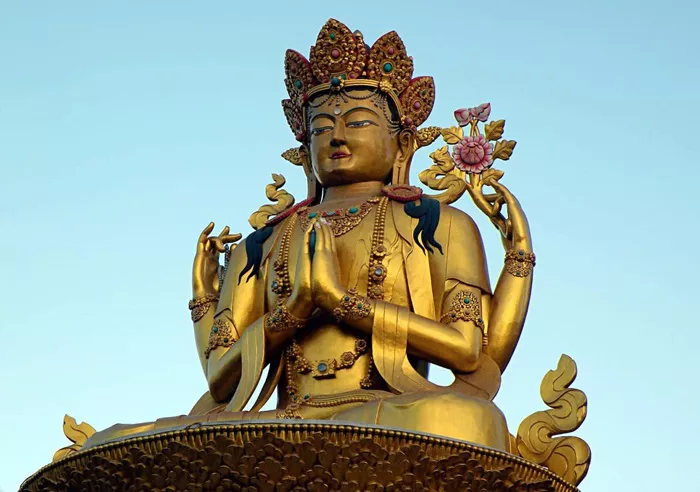Theravada Buddhism, often referred to as the “Teaching of the Elders,” is one of the oldest forms of Buddhism. It emphasizes adherence to the original teachings of the Buddha as preserved in the Pāli Canon. Predominantly practiced in Southeast Asia and Sri Lanka, Theravada has also found followers worldwide. Understanding the number of practitioners provides insight into its global influence and cultural significance.
Global Buddhist Population
Buddhism is one of the world’s major religions, with estimates of its global following varying due to differing data collection methods and definitions of adherence. As of recent estimates, the number of Buddhists worldwide ranges from approximately 488 million to over 500 million, accounting for about 6% to 8% of the global population.
Major Branches of Buddhism
Buddhism is broadly categorized into three primary branches:
Mahayana Buddhism: Predominant in countries like China, Japan, South Korea, and Vietnam.
Theravada Buddhism: Mainly practiced in Sri Lanka, Thailand, Myanmar, Laos, and Cambodia.
Vajrayana Buddhism: Found primarily in Tibet, Nepal, Bhutan, and Mongolia.
Each branch has distinct practices and interpretations of the Buddha’s teachings.
Estimating the Number of Theravada Buddhists
Determining the exact number of Theravada Buddhists is challenging due to factors like overlapping practices, cultural integration, and varying definitions of religious adherence. However, estimates suggest that Theravada Buddhism has a significant following:
Dhamma Wiki: Approximately 244 million Theravada Buddhists worldwide.
Tibetan Buddhist Encyclopedia: About 250 million Theravada Buddhists globally.
DWMS: Over 100 million Theravada Buddhists worldwide.
The variation in these figures highlights the complexities in religious demographic studies.
Regional Distribution of Theravada Buddhism
Theravada Buddhism’s influence is most pronounced in Southeast Asia and Sri Lanka. Here’s a closer look at its presence in various countries:
Sri Lanka
Theravada Buddhism is the predominant religion in Sri Lanka, deeply intertwined with the nation’s culture and history. Approximately 70% of the population practices Buddhism, with the majority adhering to the Theravada tradition. This equates to about 15 million people.
Thailand
In Thailand, Buddhism is integral to daily life and national identity. Approximately 93% of the population practices Buddhism, with the vast majority following the Theravada tradition. This translates to around 66 million practitioners.
Myanmar (Burma)
Myanmar has a rich Buddhist heritage, with about 80% of its population adhering to Theravada Buddhism. This accounts for approximately 41 million people.
Cambodia
Buddhism is deeply rooted in Cambodian culture, with about 97% of the population practicing Theravada Buddhism. This equates to approximately 15.7 million people.
Laos
In Laos, around 64% of the population practices Buddhism, predominantly of the Theravada tradition, totaling about 4.6 million adherents.
Other Regions
Theravada Buddhism has also established a presence in other parts of the world:
Bangladesh: The Chittagong Hill Tracts are home to indigenous groups practicing Theravada Buddhism.
India: A revival of Buddhism, particularly among the Dalit community, has led to a growing number of Theravada practitioners.
Western Countries: Theravada Buddhism has gained followers in countries like the United States, Australia, and European nations, often through immigrant communities and interest in mindfulness practices.
Factors Influencing Adherence Numbers
Several factors contribute to the varying estimates of Theravada Buddhist practitioners:
Cultural Integration: In many Southeast Asian countries, Buddhism is intertwined with cultural and national identity, making it challenging to distinguish between cultural practices and religious adherence.
Syncretism: In regions like Bangladesh and India, Buddhist practices often blend with local traditions and other religious practices, complicating precise counts.
Migration and Diaspora: The movement of people has introduced Theravada Buddhism to new regions, leading to diverse and dispersed communities.
Data Collection Methods: Differences in census methods, definitions of religious affiliation, and self-identification practices can lead to varying estimates.
Conclusion
Theravada Buddhism continues to be a significant spiritual path for millions worldwide, particularly in Southeast Asia and Sri Lanka. While exact numbers are challenging to ascertain, estimates suggest that between 100 million to 250 million people practice Theravada Buddhism globally. This enduring tradition remains a vital part of the cultural and religious fabric of many societies, adapting and thriving in diverse contexts.

